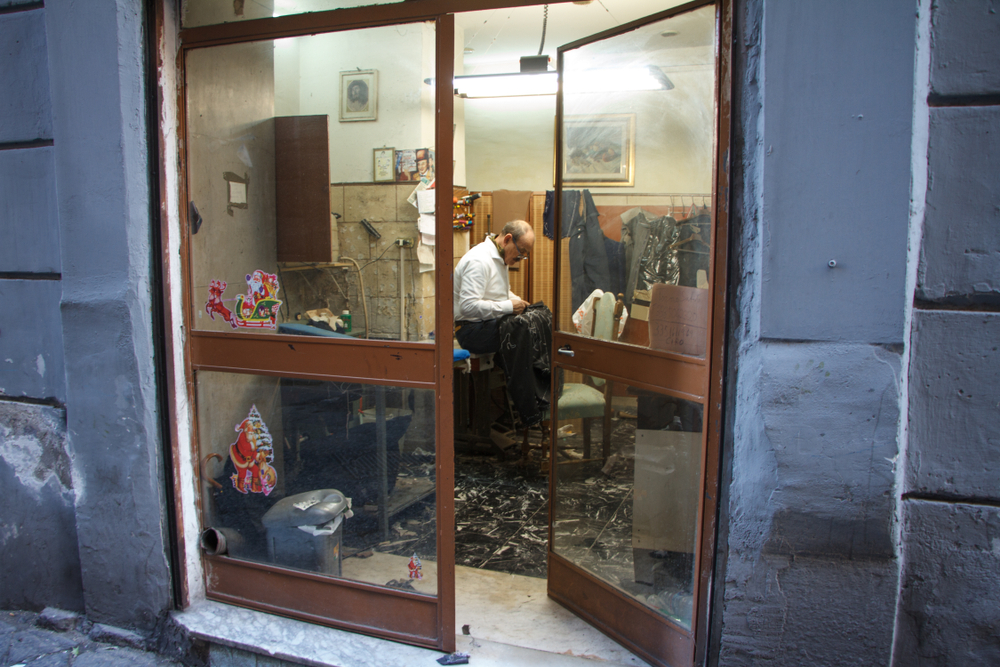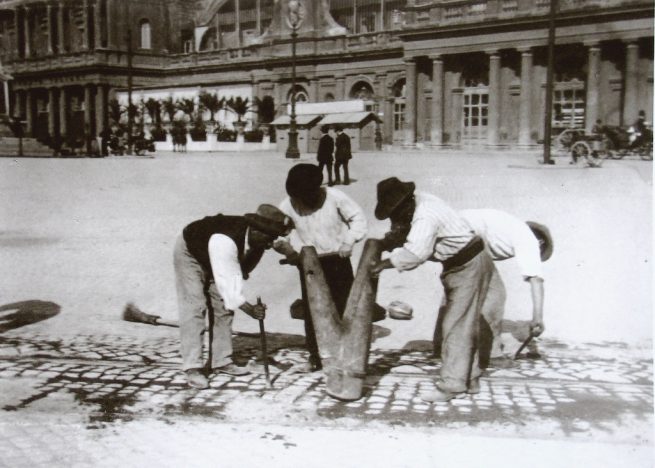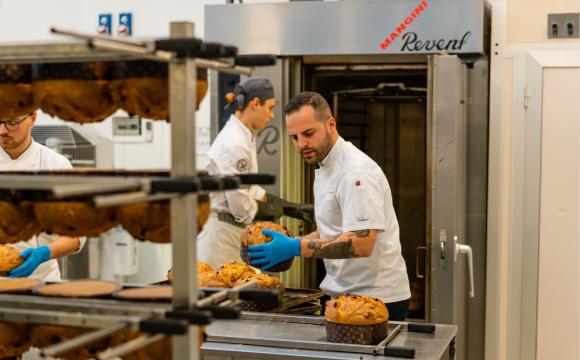The Venetian gondola is an Italian icon — and the gondoliers who pilot them have one of the most recognizable professions in the world.
Since 1094, the flotilla of rowboaters has been twisting, ducking and gliding its way through the gauntlet of Venice’s shallow rii (narrow canals).
But the reality of gondoliering is changing. Once upon a time, gondoliers passed down their line of work from one generation to another. As a result of the city’s crushing tourist trade — and the fact that many experienced gondoliers are about to reach retirement age — today Venice finds itself with a shortage of boaters to meet the demand.
In response to the lack of qualified crew, the city is recruiting newbies to the romantic ranks of the fabled oarsmen and women. (In 2010, Giorgia Boscolo became the first woman admitted to the gondolier profession at the age of 24. Today, just 14 of Venice’s 433 gondoliers are women.)
What’s involved in becoming a gondolier?

To become a gondolier takes a lot more than looking dapper in the official uniform of black trousers, a striped shirt and a straw hat. Baseline requirements include being 18 or over, holding EU citizenship and a high school diploma, knowing how to swim, and checking off some key indicators of physical strength and good health.
But some of those bullet items are necessary even for your average Italian desk job. Aspiring gondoliers, on the other hand, must go through 30 hours of classroom instruction and complete a hands-on training course to develop the skills needed to successfully navigate the city’s convoluted canal routes — all while maintaining perfect balance atop the stern of the slim, flat-bottomed watercrafts.
Recruits must also be well-versed in the art, history and culture of Venice, speak some English and French, and complete an apprenticeship under the tutelage of a master gondolier. The lucky few who pass the “boaters’ bar” become card-carrying members of the centuries-old gondoliers’ association.
Andrea Balbi, the association’s president, told The Guardian that candidates are clamoring to take the course, which can cost applicants more than €1,000. “There was no risk of the profession dying out. Venice would need to die before this profession dies,” he said.
Curious about what other prestigious historic professions in Italy might soon be posting vacancies? Here are a few.
Naples’ sartori: Tailors to kings

The enduring Neapolitan tailoring tradition has long been considered the gold standard in classic, bespoke menswear.
Sartori style isn’t just a timeless technique, it’s an art form — soft, unstructured and using only the finest materials. Though there are guiding principles that unite today’s Neapolitan tailors, each individual is also “the keeper of their own traditions, standards and secrets,” as Joshua Hunt wrote in GQ.
The Confraternita dei Sartori (Brotherhood of Tailors) was founded in Naples during the Renaissance, producing highly skilled tailors that created what today is famously termed sprezzatura — the air of effortless elegance that comes with wearing a well-made Italian suit.
Though the craft has deep roots in the shadow of Mount Vesuvius, many Neapolitan tailors do much of their training in Rome, thanks in large part to the initiative of Pope Gregory XIII. In the late 16th century, he founded a university that would eventually become the Accademia Nazionale dei Sartori (National Academy of Tailors), which opened in 1947 and is now headquartered on Rome’s Via Francesco Crispi, where it educates a new generation of master tailors.
Find out about how to join Naples’ ultimate brotherhood of sprezzatura here.
Sampietrini layers of Rome

Sampietrini — Rome’s bumpy, black basalt cobblestones carpeting most of the historic center — are both beloved and the bane of cyclists’, stroller pushers’ and stiletto fans’ existences.
The ancient stones first paved St. Peter’s square in the 16th century at the behest of Pope Sixtus V — hence the name, which means “little stones of San Pietro”.
In the last decade, many of the main thoroughfares of the Eternal City lined with sampietrini have been (or will be) replaced by low-maintenance asphalt. The ancient quadrati (squares) have been relegated to narrow alleyways and pedestrian-heavy streets; some reports have suggested that their integrity may be further compromised by the Catholic Jubilee Year 2025, during which some 32 million pilgrims are expected in Rome.
Evocative and beautiful as they are, sampietrini can be incredibly labor-intensive and costly to maintain. When road work is required, a crew must pull out the cobblestones one-by-one and replace them when construction is complete.
The good news for sampietrini job seekers is that there are only a limited number of people trained to cut the cubes by hand and hammer them into the sand base with mallets to create an even surface while expertly matching the original pattern. Historically, these workers are known as selciaroli or serciaroli.
Learn more about this unique role on the Sampietrino cultural association’s website.
Cheese whisperers of Parma

You’ve probably heard about sommeliers using their keen sense of taste and perfumers their sharply honed noses to quality control products. But if you have excellent hearing, there’s another, cheesier gig just for you.
Parma’s world-famous cheese producers employ specially trained testers who use sound and vibration to judge whether a cheese is good enough to be designated Parmigiano-Reggiano PDO (Protected Designation of Origin).
Cheese “listeners” put their ear to a waxy wheel after it’s matured for 12 months. With a small hammer, they tap around the cheese to listen for changes in pitch and tone that could indicate inconsistencies in the crystallization process. If the analysts, with their hyper-tuned-in-hearing, detect a problem, the disk is sent for additional rounds of taste testing to ensure it meets the Parmigiano-Reggiano Consortium’s extremely high standards.
Inquire about cheesy job openings here.













